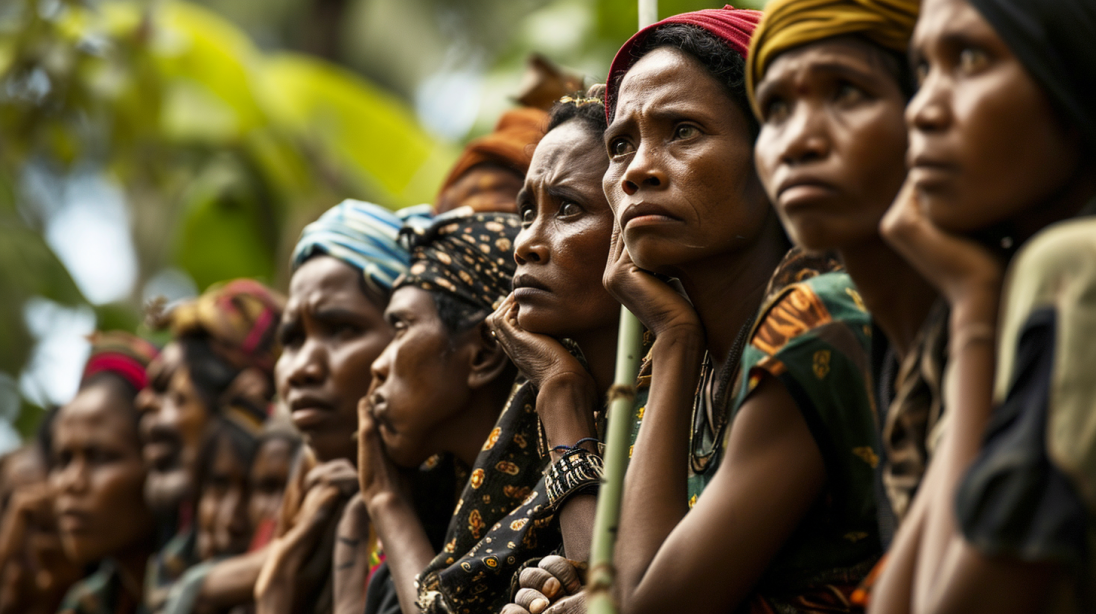Uncovering the harrowing truth behind the East Timor genocide reveals a dark and painful history that has long been shrouded in mystery and brutality. The events of 1999, marked by widespread violence and loss of life, unfolded in the aftermath of East Timor’s struggle for independence, leaving indelible scars on its people and their journey towards sovereignty. Delving into this tumultuous chapter provides a vital perspective on the resilience and determination of the Timorese in their quest for freedom amidst a turbulent historical backdrop.
How many people died in East Timor 1999?
Approximately 1,400 civilians lost their lives during the turmoil following East Timor’s referendum for independence in 1999. The conflict, stemming from a vote to secede from Indonesian rule, ignited widespread violence by pro-Indonesia militias, particularly in Dili and across the nation. This tragic period also saw up to half a million individuals displaced, profoundly impacting East Timor’s path to sovereignty.
Why were the Balibo 5 killed?
The Balibo Five were deliberately targeted and killed to prevent them from reporting on Indonesia’s clandestine incursion into East Timor. The intention was to stifle any media coverage that could have revealed the scale and nature of the Indonesian military’s operations at the dawn of their invasion in 1975. This tragic attempt to suppress the truth highlights the lengths to which the invasion force went to keep their actions in the shadows, away from the scrutiny of the international community and to continue the campaign that led to the subsequent atrocities and human rights abuses during the occupation. More info
How many Aussies died in Timor?
In the Battle of Timor during World War II, Australia lost 151 soldiers from the Sparrow Force. The conflict was part of a larger struggle in the region, with significant loss of life on Timor island.

Why did the Indonesians invade East Timor?
Indonesia’s incursion into East Timor back in ’75 was fuelled by the fear of communism’s spread—an ideology they reckoned Fretilin, the prominent East Timorese party, was championing. Seeking to extend its dominion and squelch what it saw as a potential leftist stronghold, Indonesia pushed for global backing of its move, framing the annexation as a bulwark against the red tide in the region. This was during the Cold War era when the spectre of communism haunted many a national strategy, especially in Southeast Asia.
Who won the East Timor war?
The East Timor conflict culminated in the triumph of Indonesian forces, facilitating an occupation that lasted until 1999. This period was marred by widespread human rights abuses, often referred to as the East Timor atrocity or catastrophe, before the territory ultimately voted for independence.
Who helped East Timor?
Australia spearheaded the International Force for East Timor (INTERFET), stepping in to quell the violence and atrocities amidst the turmoil following Indonesia’s retreat. During this critical period, the United Nations Transitional Administration in East Timor (UNTAET) took the reins, managing the region while also setting up the Serious Crimes Unit to address the grave human rights violations, leading the charge towards stability and eventual independence for the Timorese.
Who owns Timor?
The Island of Timor is split into two distinct entities: West Timor falls under Indonesian sovereignty with Kupang as its provincial hub, whilst East Timor, also known as Timor-Leste, stands as a sovereign nation with Dili as its heart since breaking free from Portuguese control that spanned from the 16th century. East Timor’s journey to independence was marred by conflict and human rights abuses, often remembered as the East Timor genocide, where many native East Timorese suffered during the Indonesian occupation from 1975 to 1999 before achieving sovereignty in 2002.
How did the US respond to the East Timor genocide?
During the period of atrocities in East Timor, the American response came under scrutiny for its supply of military equipment, notably OV-10 Bronco aircraft, to Indonesia which played a role in the counterinsurgency operations. Despite the harrowing human rights abuses that plagued the Timorese people, the U.S.’s engagement was criticised as tacit approval of the Indonesian government’s actions during this dark chapter of regional infamy. Contemporary concerns for human rights in East Timor persist, echoing the legacy of those turbulent times.
How many East Timorese were killed?
Estimates suggest that the number of East Timorese casualties during the conflict is likely close to 150,000, though figures as high as 200,000 have been mentioned. Indonesian military operations were found to be accountable for the majority of these atrocities, with the truth commission attributing around 70% of the lethal violence to these forces. This tragic period saw substantial loss of life and widespread human rights abuses, which starkly scarred the history of the region.
What happened in 12 November 1991?
On 12 November 1991, a tragic occurrence shook East Timor as Indonesian forces opened fire on a peaceful procession at the Santa Cruz cemetery in Dili. This event, widely known as the Santa Cruz massacre, saw the killing of at least 250 demonstrators who had gathered in a sombre act of protest, demanding independence for East Timor. The bloodshed on that day highlighted the brutal reality of the occupation and intensified international scrutiny of Indonesia’s harsh regime, which many argue contributed to the widespread atrocities constituting the East Timor genocide.
What was No 1 in Nov 1991?
On the 2nd of November in 1991, right amidst the backdrop of the harrowing conflict and atrocities in East Timor, the airwaves offered a contrasting tone with Bryan Adams’ Can’t Stop This Thing We Started hitting the number one spot on the Cash Box Top 100. The following week saw Cream by Prince and the New Power Generation take over the chart’s peak, a testament to the eclectic musical tastes of the time that provided some reprieve from the grim news of the era. More info
What happened on 2 Dec 1991?
On 2 December 1991, one of the most tragic incidents in the history of East Timor occurred. An event which is a sombre part of the wider conflict often referred to as the East Timor atrocities or the East Timorese crisis, where Indonesian military forces executed a massacre in the Santa Cruz Cemetery in the capital, Dili. Scores of East Timorese protesters, many of them young students, were callously shot as they participated in a peaceful demonstration mourning the death of a pro-independence activist. This cold-blooded act exposed the brutality of the Indonesian occupation and intensified international condemnation, subsequently playing a crucial role in East Timor’s struggle for sovereignty.
Is East Timor independent?
Yes, East Timor, officially called Timor-Leste, is an independent nation. It gained independence on May 20, 2002, following a long struggle against Indonesian rule, which was marked by conflict and suffering often referred to as the East Timor genocide. This period of turmoil led to the tragic loss of lives and highlighted the Timorese people’s resilience and determination for sovereignty, eventually leading to their recognition as an independent state by the international community, including the United States.
Conclusion
In uncovering the painful history of the East Timor genocide, we have delved into a significant chapter in the country’s struggle for independence and sovereignty. The tragic loss of countless lives and the harrowing events of the past paint a painful yet essential picture of the Timorese people’s unwavering resilience. From the Santa Cruz massacre to the struggle for autonomy, East Timor’s journey towards independence is a testament to the strength and perseverance of its people, their movement for freedom, and the international efforts that ultimately supported and recognized their sovereign status. This piece of history stands as a reminder of the need to acknowledge past atrocities and work collectively to create a better future.


Stay connected